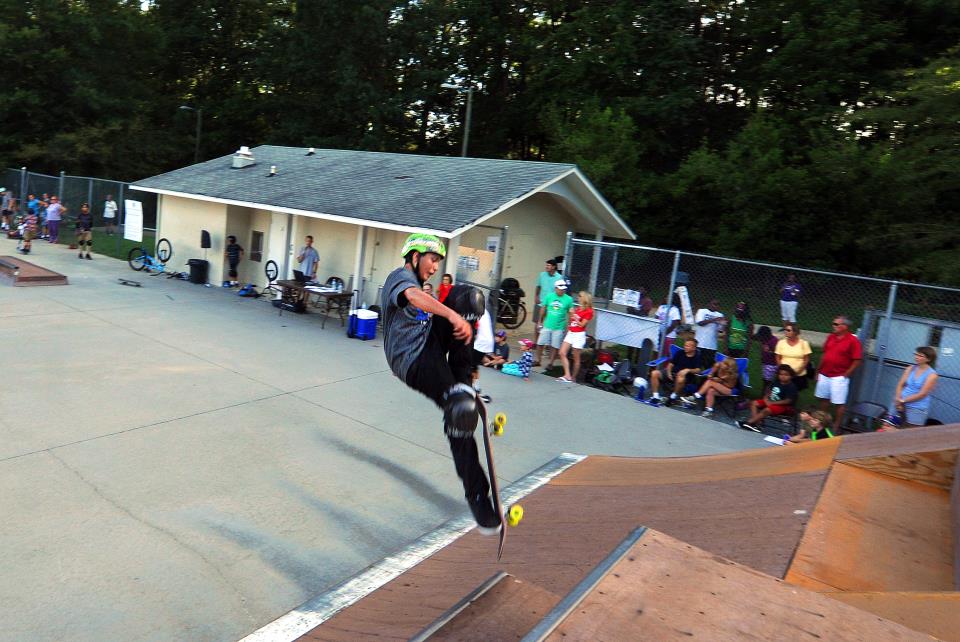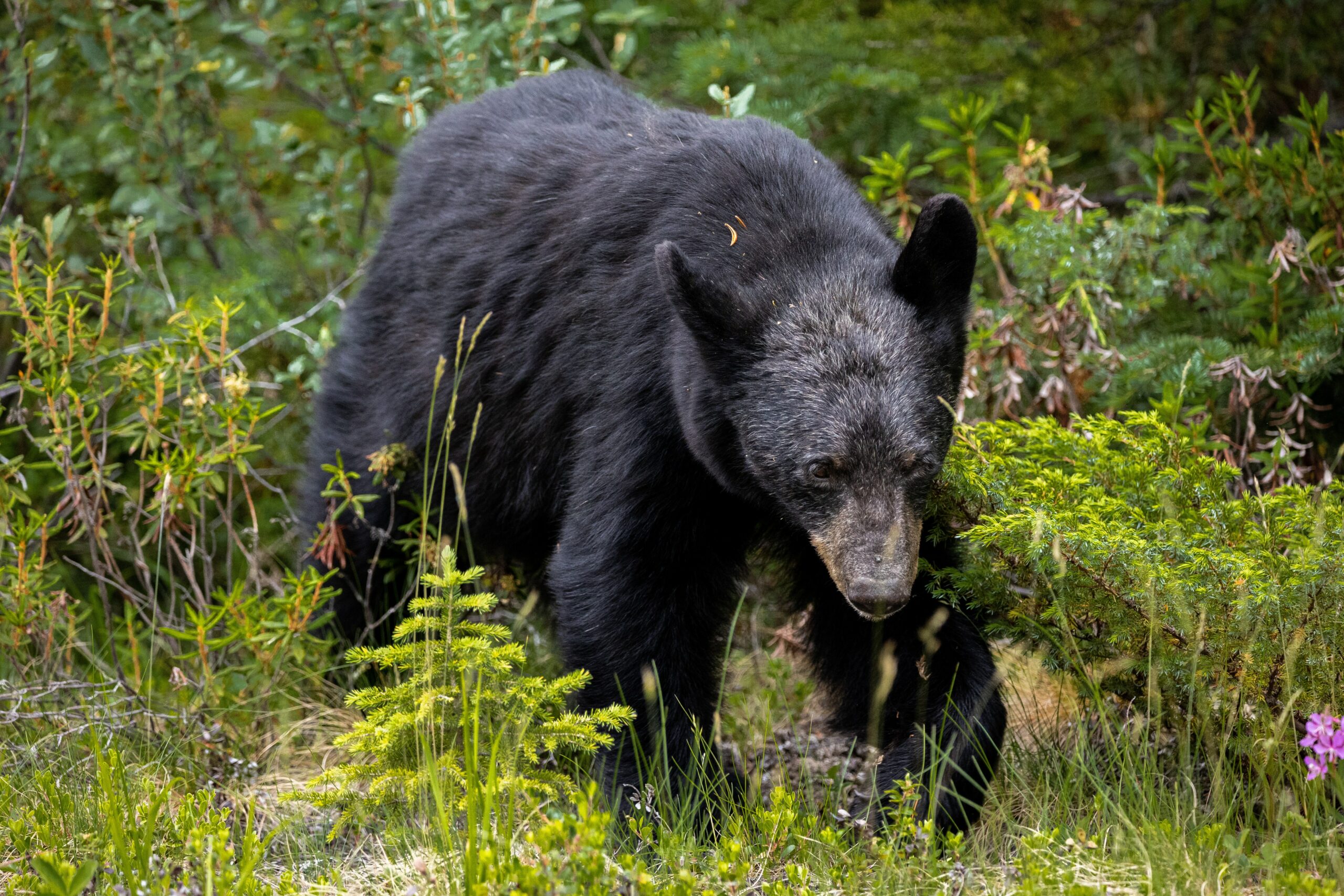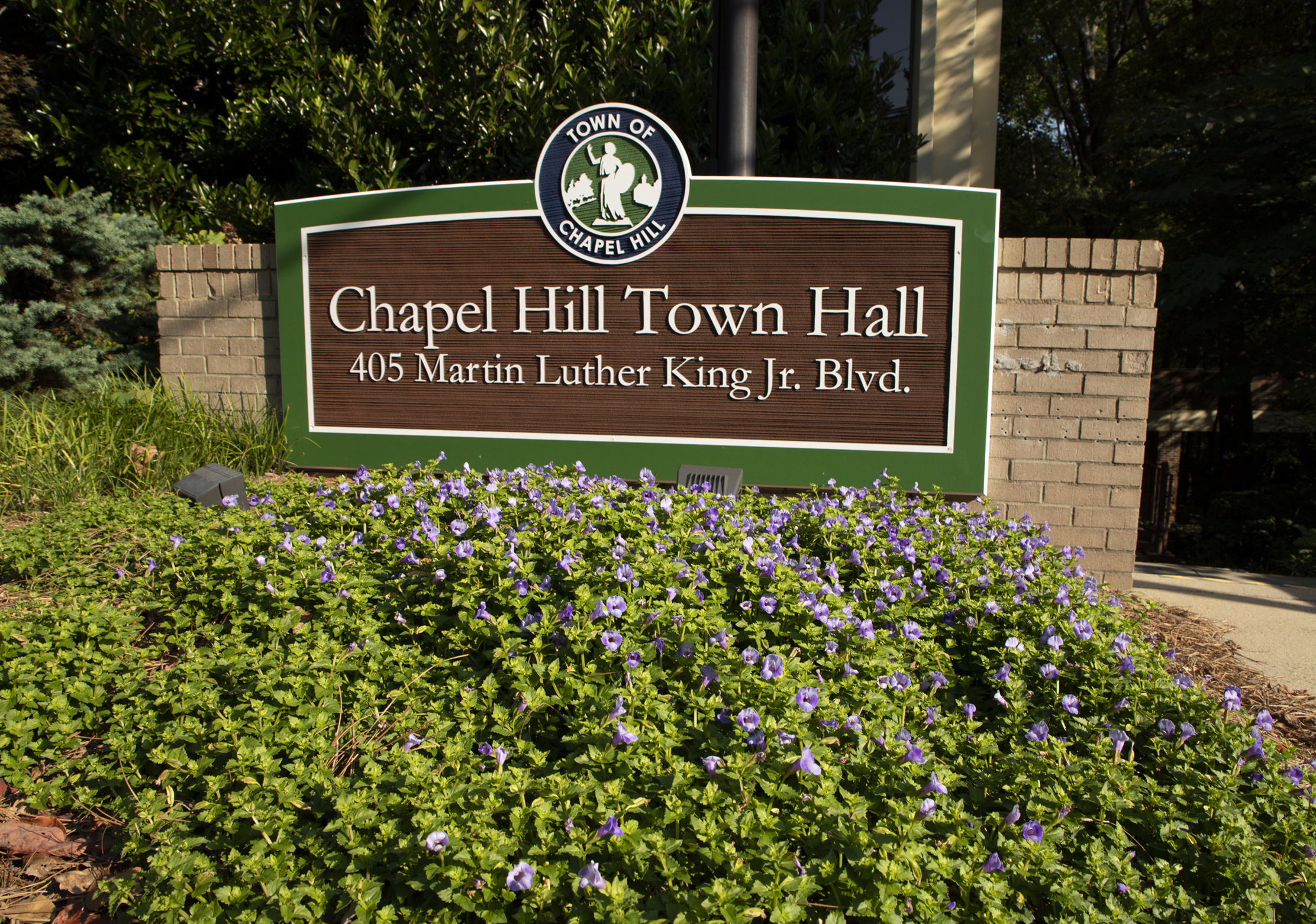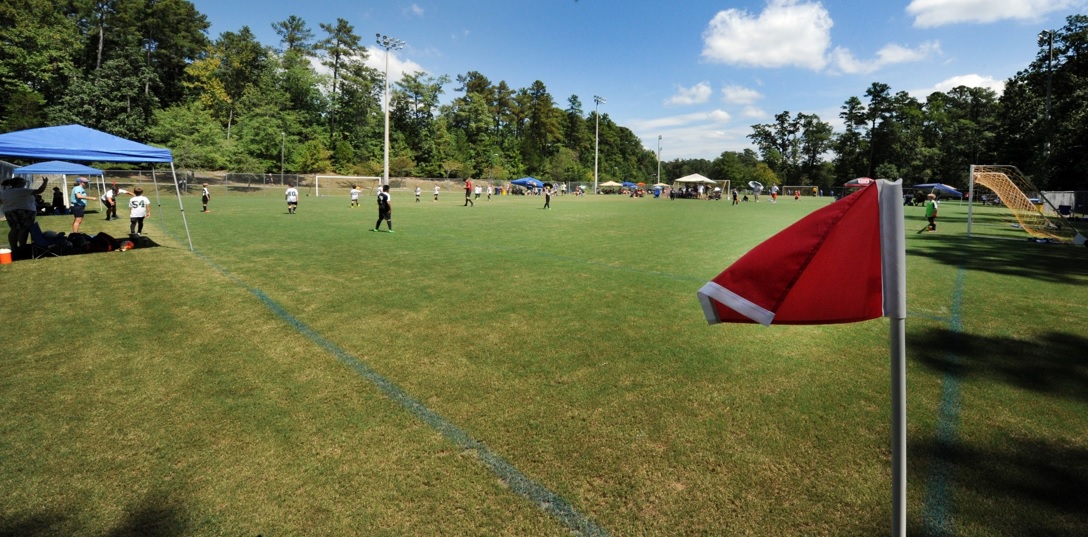In June, the Chapel Hill Town Council agreed to move forward with new synthetic turf for the Homestead Park soccer field. But since that decision, community members have expressed concerns about dangerous carcinogens in the rubber that could endanger the athletes, contaminate storm water and harm the environment.
In response to these concerns, Parks and Recreation Director Jim Orr released a “Frequently Asked Questions” document. He addressed many of these points during the June town meeting, including the main reason for the project.
“There’s a variety of reasons, and one main reason is that you can play on the surface 365 days a year,” Orr said.
A popular concern centered on the turf’s chemical make up. The proposed brand for the Homestead Park is called EPDM – a rubber derivative that is different from the SBR crumb rubber commonly associated with caner-causing chemicals. SBR crumb rubber is the most widely used infill in synthetic sports fields and is already installed at Cedar Falls Park in Chapel Hill.
The EPDM infill is a newer product that doesn’t contain tires or the oils in other synthetic blends. Chapel Hill will be among the first in North Carolina to make the additional investment in this new product.
“EPDM particles, the infill, is 100 percent recyclable, and it is also not the crumb rubber that you’ve heard some concerns about,” Orr said.
Councilwoman Jessica Anderson asked the question that many community members have been asking themselves.
“I know that the crumb rubber is a different thing, but what’s the status with the safety studies for EPDM and is there a way we can wait to know about the potential safety issues?” Anderson said.
Orr said that tests for the turf’s chemicals are still underway and could take another two to four years to gain comprehensive results.
Jeff Charles, the chair of the Transportation Connectivity Board, spoke at the meeting and called upon his 35 years of experience as a board certified toxicologist.
“The type of study that you’re talking about being done, with actual kids playing ion the field and whether they develop issues or whatever, are some of the more difficult studies to run. And after the two, four or eight-year period they take to get this done, they still may not come out with a definitive answer,” Charles said.
Emails to board members and the Parks and Recreation department asked about updated safety studies, another sentiment echoed by Anderson.
“I definitely would hate for us to find out in two years that there is a major health concern. And is EPDM similar to crumb rubber?” Anderson asked.
Orr explained that the chemical make up is fundamentally different from crumb rubber.
“It’s a virgin rubber,” Orr said. “It is not from tires like the tire-crumb rubber that is under concern. It’s also encapsulated by the scientific name that the abbreviation EPDM refers to. So it’s 100 percent recyclable and it’s the next-level generation of infill.”
In the document he emailed to the town, Orr also addressed the financial benefits of the project.
“It would allow additional revenue to be earned as far as rentals for the six months in the past that we wouldn’t be renting the facilities,” Orr said.
Currently, the town and two soccer associations, Triangle United and Rainbow Soccer Association, are working to draft a Memorandum of Understanding to proceed as partners, followed by a Performance Agreement that will spell out the financial commitments of all parties. The soccer associations have agreed to pay $800,000 to fund the new field that will draw an estimated 42,000 additional people to the fields. Councilwoman Maria Palmer urged the town to move forward with the project.
“You have kids who are desperate for exercise and desperate for recreational opportunities,” Palmer said. “So if we’re going to do this, we have to do this when we have money in hand and when we have these three organizations helping us before they decide to invest their $800,000 in Chatham, Durham or Hillsborough,” Palmer said.
Orr said that it’s unlikely the soccer associations would financially support $500,000 renovations to keep the existing grass field. Maintaining the grass field also incurs costs, Orr said, and forces the town to close the field during the wet winter months.
To address drainage concerns, including flooding and water quality, the Parks and Recreation staff will be partnering with the Stormwater staff to asses the area, Orr wrote in the email.
A copy of the “Homestead Field Conversion to Synthetic Turf Q&A” can be found below.
Homestead Field Conversion to Synthetic Turf Q&A
Question: What is the current scope of the staff’s work regarding the Homestead grass to turf conversion?
Staff Response: Staff is working to improve the year-round performance and playability of the fields with the resources available and found some great community partners, Triangle United and Rainbow Soccer Association, to help with this effort. Before coming to the Council in June 2016, the partners evaluated different turf options, including what was installed at Cedar Falls Park in 2013. The Cedar Falls Park turf is SBR (styrene butadiene rubber) crumb rubber infill, derived from scrap car and truck tires that are ground up and recycled. SBR crumb rubber is the most widely used infill in the synthetic sports field and landscape market.
EPDM infill — proposed for the Homestead Park fields – is a newer product that uses virgin rubber (as opposed to recycled materials) and removes some of the unknowns from the product (such as oils from tires.) EPDM stands for ethylene propylene diene monomer. The differences between EPDM infill and SBR crumb rubber led to the soccer associations’ request and the staff’s recommendation to use the EPDM infill, which the Council resolved to do at its June 20th meeting. Chapel Hill will be among the first in North Carolina to make the additional investment in this new product.
Question: What does the process look like between now and the potential start of field renovation?
Staff Response: The Town and the two soccer associations, Triangle United and Rainbow Soccer Association, will first execute a Memorandum of Understanding to proceed as partners in the field conversion project. Next, they will negotiate and execute a Performance Agreement that will spell out the financial and other commitments of all parties, consistent with the resolution adopted by Council on June 20th, 2016. A formal bid notice for the construction portion of the project will be published after the performance agreement is in place. The bid award will need to be approved by Council before moving forward. Council will be apprised of progress toward each of these milestones.
Question: Would it be possible to install the same drainage system used for synthetic turf fields but install grass over it instead of artificial material?
Staff Response: The drainage system for synthetic turf would not work for a natural turf field because synthetic turf is installed over a layer of impervious surface and the drainage system is designed for this. The Town could still renovate the fields with natural turf. There are a few things to consider:
· The renovation would have to take place during the growing season, which is May to September. The project would include re-grading the field, removing unsuitable soil and bringing in appropriate soil/sand base, renovation of irrigation system, installing a complete field drainage system and re-sodding the fields.
· The estimated cost for the project is $500,000 and it is unlikely that the soccer associations would financially participate. In that case, the Town would incur all of the project costs.
· There would be recurring monthly maintenance such as mowing, fertilization and herbicide applications and re-sodding worn areas that wouldn’t exist with synthetic turf.
· The fields would still be closed six months out of the year like the Town’s other natural turf fields (Southern Community Park, for example). This is to allow the turf fields to rejuvenate while staff implements an aggressive off-season maintenance program.
· The user organizations would find it very difficult to find adequate field space during the six months the fields would be closed and the Town would not generate any revenue during that time.
Question: Is there a way to estimate the increased usage by the community of the Homestead fields after conversion to synthetic turf?
Staff Response: By combining the estimated use of the area’s two largest soccer associations, YMCA, lacrosse teams, and other small groups, a projected 42,000 additional users will participate in games and practices on these fields per year, compared to the current usage on the natural surfaces.
Question: What is being done to assess and address stormwater issues (flooding, water quality, etc.) related to this project?
Staff Response: Stormwater and Parks & Recreation staff have visited the site together and have discussed site requirements. Stormwater staff will provide the project requirements for inclusion in the bid specifications when the project reaches that stage.
Question: Has the federal government provided any guidance about the use of synthetic turf for playing fields?
Staff Response: At this point, the federal government’s research is focused only on SBR crumb rubber. This research is still in progress and results are not expected for several years. Some of the resources they have made available in the meantime are listed below.
· Federal Research on Recycled Tire Crumbs Used on Playing Fields
https://www.epa.gov/chemical-research/federal-research-recycled-tire-crumbs-used-playing-fields
· EPA Tire Crumb Questions and Answers
https://www.epa.gov/chemical-research/tire-crumb-questions-and-answers
· Federal Research Action Plan on Recycled Tire Crumb Used on Playing Fields
https://www.epa.gov/chemical-research/federal-research-action-plan-recycled-tire-crumb-used-playing-fields
Question: How are other agencies approaching their field renovation projects?
Staff Response: The public concerns expressed about SBR crumb rubber have not deterred other agencies from moving forward with new installations. Our staff has not found any recent or future turf field projects in North Carolina moving forward with any material other than SBR crumb rubber. This includes the following: UNC-Chapel Hill (intramural fields and practice fields), City of Asheville (five fields), Buncombe County Schools (six high school fields), the Town of Cary (two fields), and Olympia High School in Charlotte.






